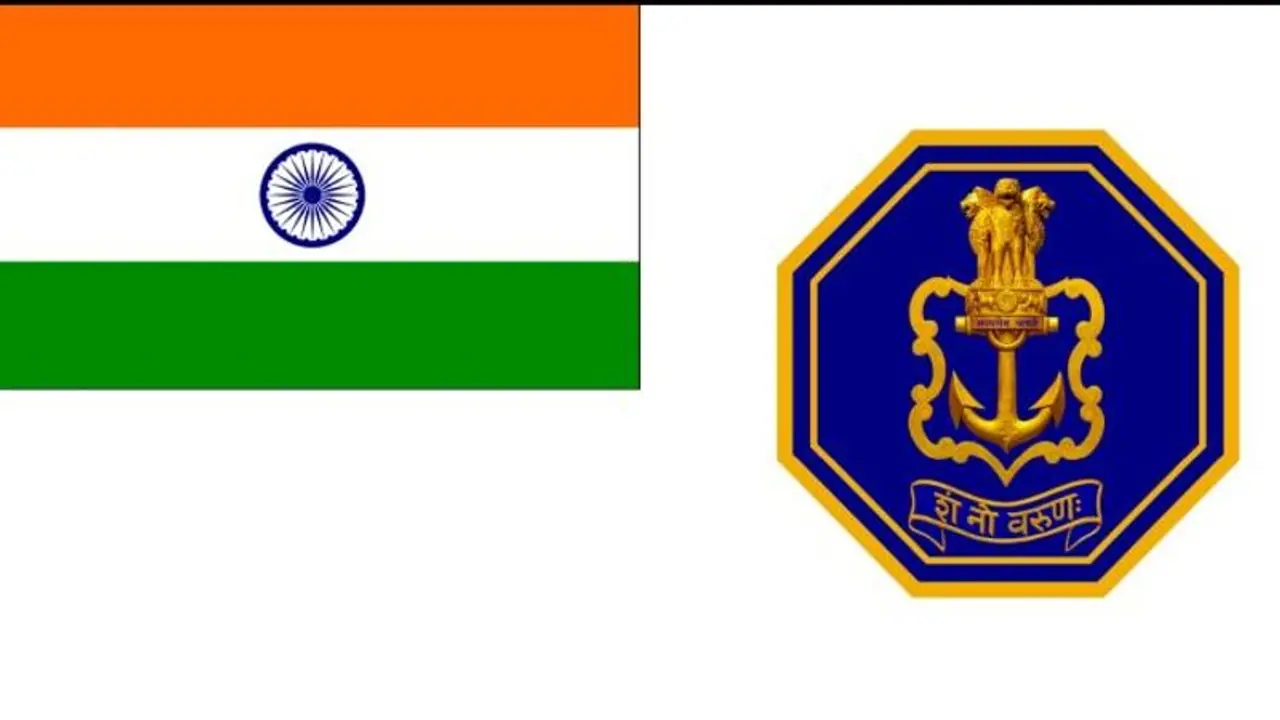The new naval ensign now comprises two main constituents -- the National Flag in the upper left canton and a Navy Blue -- Gold octagon at the centre of the fly side (away from the staff).
The Indian Navy's new ensign was unveiled on Friday by Prime Minister Narendra Modi on the sidelines of the commissioning of the Indigenous Aircraft Carrier Vikrant.

The erstwhile Indian Naval ensign included the National Flag in the upper left canton, red vertical and horizontal stripes and a golden yellow State Emblem superimposed on the intersection of the red stripes. The national motto 'Satyamev Jayate' engraved in the Devanagari script, was included underneath the State Emblem. This White ensign has been flown by all formations, ships and establishments of the Indian Navy till September 1, 2022.
Also Watch: Vikrant, the legend is back
As part of the endeavour to move away from the colonial past, it was felt that transition to a new design that drew inspiration from our history was needed. Design inputs were invited from the entire Navy. The Navy received overwhelming responses from naval personnel from all formations and various hierarchies and has helped in developing the new naval ensign.
The new naval ensign now comprises two main constituents -- the National Flag in the upper left canton and a Navy Blue -- Gold octagon at the centre of the fly side (away from the staff).
The Octagon is with twin golden octagonal borders encompassing the golden National Emblem (Lion Capital of Ashoka – underscribed with ‘Satyamev Jayate’ in blue Devnagri script) resting atop an anchor; and superimposed on a shield. Below the shield, within the octagon, in a golden bordered ribbon, on a Navy Blue background, is inscribed the motto of the Indian Navy, ‘Sam No Varunah’ in golden Devnagri script.
The design encompassed within the octagon has been taken from the Indian Naval crest, wherein the fouled anchor, which is also associated with a colonial legacy, has been replaced with a clear anchor underscoring the steadfastness of the Indian Navy.
The Navy Blue colour of the above octagonal shape depicts the Blue Water capabilities of the Indian Navy. The twin octagonal borders draw their inspiration from Shivaji Maharaj Rajmudra or the Seal of Chhatrapati Shivaji Maharaj, one of the prominent Indian kings with a visionary maritime outlook, who built a credible Naval Fleet that earned grudging admiration from European Navies operating in the region at the time.
The Octagonal shape also represents the eight directions (four cardinal and four intercardinal), symbolising the Indian Navy’s global outreach. The Octagon stands for good fortune, eternity, and renewal and draws positive energy from all directions. The new Naval White Ensign is, thus, rooted in the glorious maritime heritage of India, as well as reflective of our Navy’s present-day capabilities.
The President of India has approved the introduction of the new designs of the Naval Ensign, as also the Distinguishing Flags, Masthead Pennants and Car Flags for the Indian Navy.
